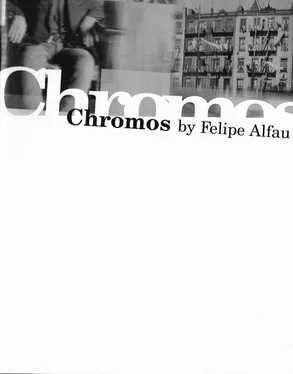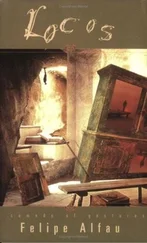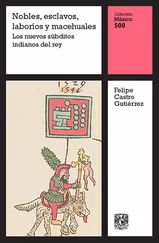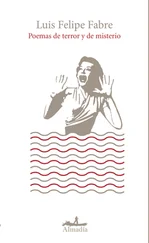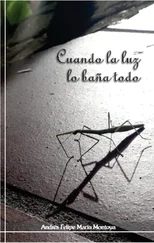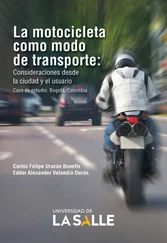“Extraordinary, Schumann. The moderns have not caught up with him yet, but his heritage did flourish in Debussy. Not only the preoccupation with the novelty in elegance which constitutes so much of the charm of romanticism, but the romanticism essentially musical in the pursuit of new harmonies and coloring — compare their arabesques — the spirit of acoustic experimentalism”—and he played something about a girl with flaxen hair— “And yet, there is where he might have gone wrong. Those whole tone progressions, you know, deceptive and illicit as the little lines behind the frame. The effect constitutes a novel but fallacious illustration. Every note standing in the same relationship to all the others destroys the feeling of tonality and consequently of modulation — one of the most beautiful devices of musical structure — as in the case of the chromatic scale of equal temperament. It reduces everything to a question of pitch—” there was his laughter again. “Like the little lines behind the frame, reducing instead of increasing.”
He played from a very slow waltz, also Debussy, and spoke in gloomy tones of waltzes in general and in particular of a very sad one of Sibelius: “That is not a waltz, it is a dance macabre. People could not dance to that; only the dead could dance to it.”
Garcia began to talk to me and although I can’t remember what he said and don’t think I paid much attention, it created enough of a distraction. The Chink seemed to have gone to sleep but I noticed that he opened his eyes intermittently to help himself to the tapitas or a drink of manzanilla. Perhaps he was listening and concentrating, because the Moor, who was now playing a waltz, said to him: “This is for you. It brings back memories, eh, Chink?” and the Señor Olózaga opened his eyes and smiled a faraway smile and seemed to go into a contented reverie. That was his favorite tune, the Moor said very mysteriously, and the Señor Olózaga’s smile broadened and he settled himself more comfortably in his chair. He was enigmatic.
I noticed that the tapitas had been growing in size under the masterful guidance of the Cuban boy, who anticipated all our wishes, until after a while we were eating rice with clams out of regular dishes and the Moor a bowl of garlic soup. Magnificent confusion and disorder. I read from the notes in my hand:
Unlike Newton who claimed to make no hypotheses, one must make one fundamental and radical hypothesis for everything in the world of our experience to fall neatly into place and account for all phenomena. This is the advantage of this view over all others which have been advanced with the same purpose, but are full of patchwork and compromises of reason so that mechanics and cosmology rest — if this can be called rest — on two independent bases and are incapable of solving or explaining the simplest physical facts, including ourselves.
The secret and the key is the fourth perpendicular. Euclid with a fourth coordinate.
My attention was arrested by a pause in the conversation that was filled with some Spanish music of remarkable brilliance. Many have characterized the Spanish school of playing as excelling in its filigree delicacy and tenuous shading, crisp and frosty in the icicles of its expression. Not him. His was a style impetuous and abandoned. He played more like a natural musician than a trained virtuoso, where lack of digital dexterity is compensated by overconfidence of understanding and purpose in the conviction of being able to turn any blunder into an improvisation.
. but there is no motion; not only absolute motion, as the relativists timidly claim, but no motion at all — only inclinations between the fourth perpendicular and the other three. Only extensions. The reasons for the impossibility of detecting absolute motion become obvious, as this is the same as determining which of several intersecting lines is separating from the others — a meaningless question.
Descartes, with his analytic geometry, gave the key to this simple fact. The obvious clue was there, but almost all failed or refused to see it, and if that had not been enough, the elegant notion of the hodograph conceived by my illustrious countryman and spiritual ancestor should have made matters even plainer, if that were necessary.
I stopped reading to put a few questions to the Moor and in answer he disclaimed any originality in these theories. He reviewed the bold encompassing of Minkowski, the optimistically conditioning analogies of Hinton and crystal clear digest of Ouspensky, as some of the few who were on the right track and then others since Lagrange’s well-founded suspicions. He bowed politely to Gauss and bypassed non-Euclidians to end in a swift curtsy before Riemann and run his hands over the piano in irrelevant improvisation that climbed the upper register and kept going to reach for the bottle of wine standing guard there and he continued to theorize. I turned back to the notes. At least I could try to reread their meaning, but to follow his arboriform conversation was too much.
Yet the very great majority rejected it, could not admit that time and motion are but the impression we receive from four-dimensional extensions, and they continued to build their physics and mechanics upon three-dimensional projections and slides and shadows.
He was playing again from Chopin, something sad, sorrowful to the point of lugubriousness: “He was a sick man, no doubt of that,” he said half to himself, “but in other things he showed tremendous force and rebellion — vitality. Berlioz made a mistake in judging him with a banal cruelty induced by the desire, fashionable at the time, of making one more phrase. Chopin was not dead all his life. He has not died yet.” He stopped and spun on the stool to face de los Rios: “It was a hasty judgment drawn from a few instances. Short-sighted, exactly like the others.”
Contemporary scientists have tried to compromise, had to admit certain facts that could not be denied any longer, but instead of lifting the frame, they began to look at it through telescopes and microscopes and measure it with sidereal or more or less ingenious chronometers, only to become involved in greater contradictions and end in dismal surrender. Anything rather than let go of the intuitive concept of time. It is that insane fear of the absolute which blinds them. As their contributing concession, they admitted time as a fourth coordinate in the strictly mathematical sense, whatever that means; as if it had not been used already as such for centuries — but never in the literal sense.
Further on I read:
. and this apparently formidable and elementary geometric objection to taking higher dimensions literally, because of supposed inconsistency with a change of coordinates, can be easily dealt with.
If it was elementary and easy, the formulas and line of reasoning that followed escaped me. I resented the patent implication and rather than put the blame foolishly on my ignorance, I placed it squarely and justly on the involved, obscure and careless style of the author. It was a consolation to know that, had this elementary and easy question been presented correctly and clearly, I would have grasped it without difficulty, but I refrained from asking the Moor or Dr. de los Rios to elucidate. Like Don Quixote with his helmet visor, I did not want to expose my mended vanity to a second test. I imagine that he considered relativists as outmoded and not entirely in good faith. He was poking fun at them in the next note I read:
Newton’s experiment with the spinning vessel full of liquid as a proof of absolute motion, never quite satisfactorily explained away by semi-modern physics, becomes positively inconvenient by adding another equally filled vessel revolving at the same time but in opposite direction and the effect on relativists should be devastating— Dizzily they pick up all their popularizing tackle: Fitzgerald “contraptions,” elastic and non-elastic rods, fast and slow clocks, light signals, free-falling elevators and sidereal swift-traveling twins who turn out younger than each other, and decide to go home to flatland aboard their equivalence hypothesis and call it a day; when by considering the experiment in the light of this theory, as a helix extension, there would have been no cause for embarrassment.
Читать дальше
